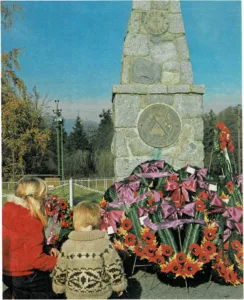Armistice Day Remembrance Day Veterans Day
Lest we forget
November 11
In Flanders fields the poppies blow Between the crosses, row on row,
That mark our place; and in the sky
The larks, still bravely singing, fly Scarce heard amid the guns below.
from In Flanders Fields by John McCrae
For more than four years the war raged on. Then, at 11:00
[a.m.]{.smallcaps} on November 11, 1918, the guns stopped firing. World
War I was over—on the eleventh hour of the eleventh day of the
eleventh month. The armistice—- the agreement to end the war—had
been signed.
November 11 became Armistice Day, a day on which many nations honor
those who died for their country. In France and the United Kingdom, it
is still called Armistice Day. In Canada, it is called Remembrance Day.
In 1954, in the United States, Armistice Day was changed to Veterans
Day. It became a time to honor men and women who have served in the
nation’s armed forces.
Each year, at Arlington National Cemetery in Virginia, there are special
ceremonies.
These begin with two minutes of silence, followed by a bugler playing
taps. A wreath is placed at the Tomb of the Unknowns—the graves of
three unknown Americans, one from World War I, one from World War II,
and one from the Korean War.

On Remembrance Day in Canada, two children kneel for a moment to
remember all the Canadians who died for their country.
In a ceremony in Washington, D.C., a wreath is placed at the Vietnam
Veterans Memorial to honor Americans in the armed forces who died in the
Vietnam War.

